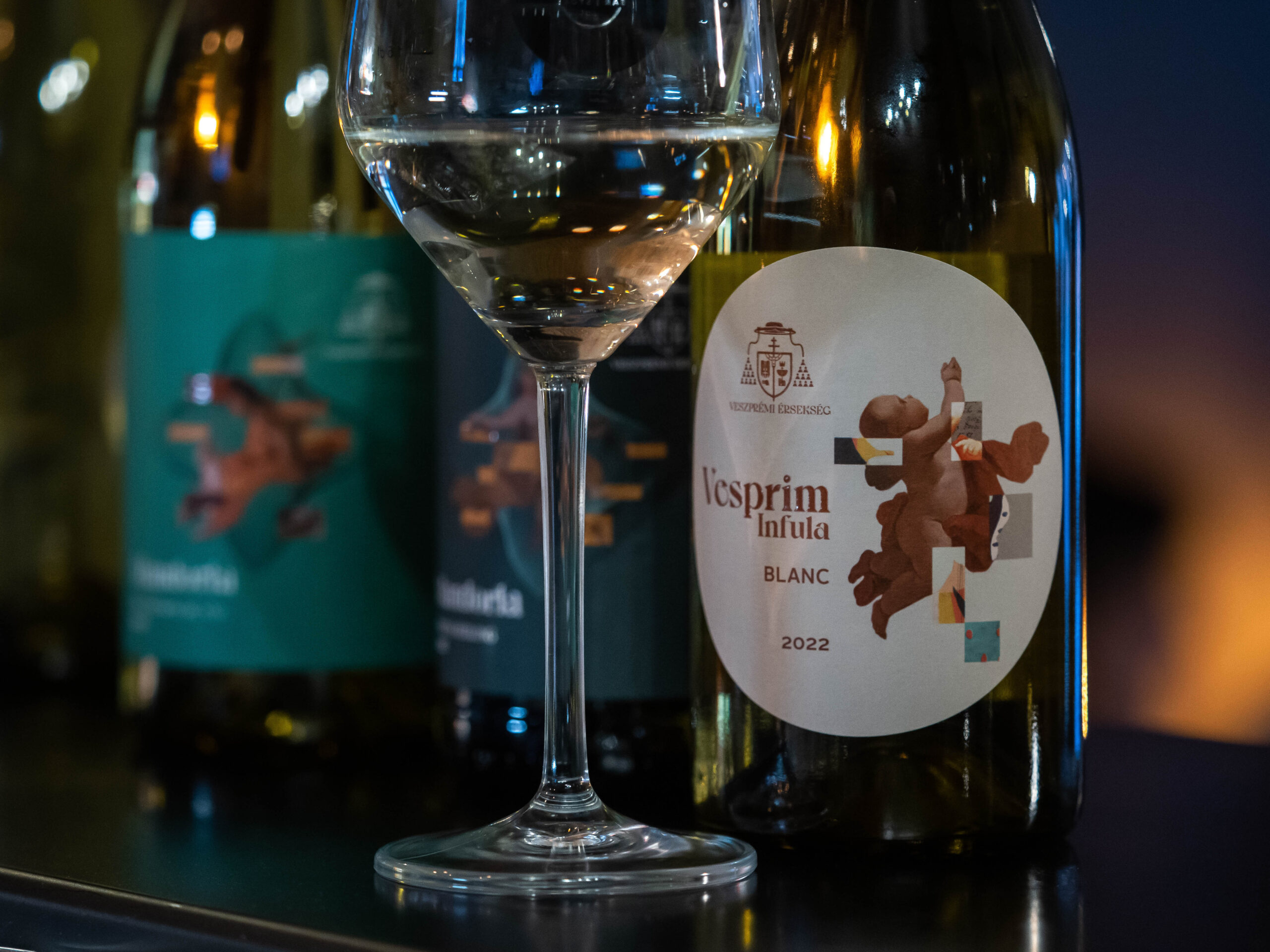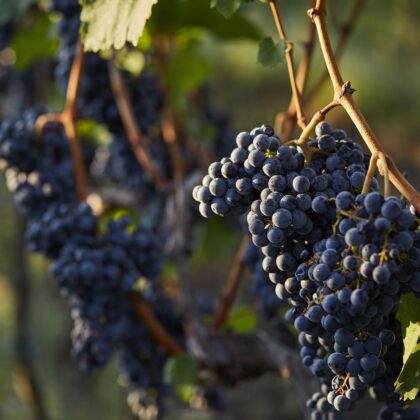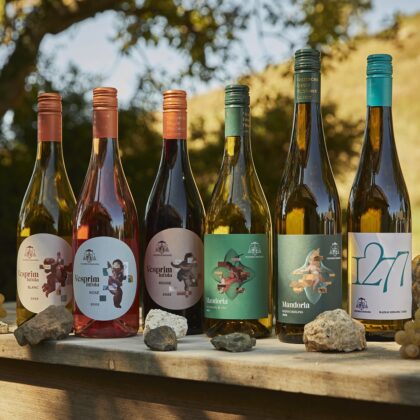Life at Veszprém Archdiocese Winery has stepped up a notch in parallel with the reopening of Veszprém Castle district. The 2022 vintage wines are ready: Vesprim Infula Blanc, Rosé and Rouge, as well as the Mandorla Rajnai Rizling (Rhine Riesling) and Sauvignon Blanc. Wine connoisseurs could already sample these at an event held in the Archbishop’s Palace, Veszprém between 12-14 May. From this May, the Winery has entered into a collaboration with Bortársaság (Wine Society) that boasts 25 outlets in Hungary; from 15 May, the cellar’s beverages are also available in their shops and online platform. Nature is in full flow, too: this month is the moment for essential shoot thinning on the Mindszentkálla and Felsőörs vineyards.
New wines bottled
The 2022 vintage wines of Archdiocese Winery are ready. We have already written about how consumers will come across new wine ranges and new designs this year. Inspiration for the labels came from frescoes in the grand chamber of Veszprém Archbishop’s Palace. The names of the categories are also closely associated with Veszprém Archdiocese. Cuvées have been named Vesprim Infula, ‘infula’ meaning mitre. Medium-category wines feature under the collective name Mandorla, the oval aureole or mandala encompassing the saints. Just such a mandala surrounds the eponymous saint seen in a stained-glass window of St. Michael’s Cathedral, Veszprém. Premium wines bear the name 1277, this being a historic date since the Archdiocese, and its predecessor Veszprém Bishopric, has been engaged in grape cultivation and winemaking since this time.
Among the new wines, the cuvées, that is, Vesprim Infula Blanc, Rosé and Rouge, and two members of the Mandorla family, the Sauvignon Blanc and Rajnai Rizling, have been bottled first. This year, a total of 30,000 bottles have been produced. Wine lovers could already try these new wines at a Castle district event held in Veszprém as part of Gizella Days between 12-14 May. Initial feedback from this three-day event is very positive. “It was a really great feeling to present the new wines there, exactly where we gained inspiration for the new labels. Satisfaction and a good feeling caused by the wine tasting was apparent on the faces of guests; in many instances, I saw nods of approval. For me, this was the true success: making consumers happy. I also heard comments saying that it was a good thing for Veszprém finally to have its own wine, and a good one at that,” says head winemaker Antal Benesch summing up his experiences of Gizella Days. Anyone who missed Gizella Days has a chance to sample the new wines at various culinary and wine festivals in Hungary, for example, Rosé, Riesling and Jazz Days or the Veszprém Gourmet Festival.
Collaboration with one of the country’s largest wine traders
Following a round of professional negotiations and provisional wine tasting, Veszprém Archdiocese Winery has entered into a contract with Bortársaság that owns approximately 25 outlets around Hungary. The Winery’s output has been available throughout the entire network of shops and on the webshop of the long-established wine trader since 15 May. Furthermore, the wines can also be found in the Gizella Gift and Bookshop in Körmendy House, plus from this summer they can also be purchased from the Winery’s own webshop. Details on the official FB page and website.
Work on the estate
May is the month for shoot thinning on the Winery’s two vineyards in Mindszentkálla and Felsőörs. The number of developing shoots on the vine can be regulated by pruning. However, it is possible that not as many shoots grow on the stock as light buds we would leave at pruning, what is more, some of the buds can remain dormant. In the interest of obtaining the optimum number of shoots on the stock, it is important to remove useless tendrils, that is, shoot thinning, otherwise known as green pruning. This is how Antal Benesch, head winemaker, explains the process. The expert goes on: the purpose of shoot thinning is that the remaining shoots can grow faster, it improves the photosynthesis of the leaves, so pruning performance is better, excessive burden on the stocks can be reduced, and by aerating the foliage it is possible to reduce the risk of fungal infections becoming established.



